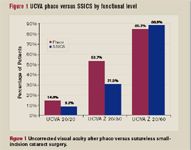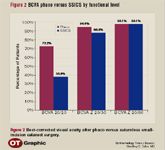Article
Manual small-incision technique offers viable solution for cataract surgery
The study showed SSICS could be performed more efficiently than phaco without compromising outcomes.

Geoffrey C. Tabin, MD, professor of ophthalmology and visual sciences and director, division of international ophthalmology, John A. Moran Eye Center, University of Utah, Salt Lake City, reported on the study at the annual meeting of the American Society of Cataract and Refractive Surgery.

"Although phaco is considered the standard of care for most cataract surgeries in the United States, the availability and expense of equipment are limiting factors in developing nations," he said. "Furthermore, hard, hypermature cataracts that are less conducive to phaco are encountered more commonly in third world countries. Experience with SSICS and the results of this study indicate that it offers a solution for achieving high-volume, high-quality, cost-effective cataract surgery."
The SSICS technique
The technique for SSICS involves a temporal approach. It begins with limited peritomy and light wetfield cautery. Then, starting 1.5 to 2 mm posterior to the limbus, a 6-to 7-mm scleral tunnel incision is created that is widened to about 9 mm as it is carried forward into clear cornea. Capsulotomy is performed using a straight needle, and a 3-mm metal keratome blade is used to open the internal lip of the tunnel incision. The nucleus is hydrodissected, loosened, and floated into the tunneled incision using a Simcoe cannula and then hydro-expressed. The same cannula is used to perform cortex removal.
The study Dr. Tabin reported was conducted at a microsurgical outreach eye clinic in Nepal and enrolled 108 patients who were randomly assigned equally to phaco or SSICS. Eligible patients had mature cataracts but no other discernible ocular pathology that could affect their outcome. David F. Chang, MD, clinical professor of ophthalmology, University of California, San Francisco, performed all of the phaco procedures using a phaco chop technique with implantation of a foldable, three-piece silicone IOL (Clariflex with OptiEdge, [Advanced Medical Optics] AMO) or a foldable hydrogel IOL if the calculated power was not available. SSICS with implantation of a non-foldable, single-piece PMMA IOL was done by Sanduk Ruit, MD, director, Tilganga Eye Center, Nepal. The protocols for preoperative preparation and postoperative medication were identical for all procedures, and the two groups were well matched demographically and in their baseline characteristics.
Follow-up for the group was excellent, with all patients seen on postoperative days 1 and 5, 98% returning for follow-up at weeks 3, 6, and 12, and more than 85% evaluated at 6 months.
Newsletter
Don’t miss out—get Ophthalmology Times updates on the latest clinical advancements and expert interviews, straight to your inbox.




